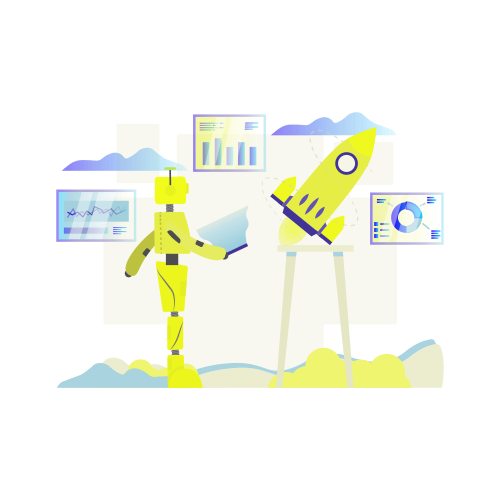Process Discovery: Why It’s Critical for Continuous Improvement and How to Do It Better
The 3 P’s for continuous process improvement are Process Discovery, Process Optimization and Process Implementation. The 3 P’s are like three pillars that form the base of your process improvement effort, and just like a house, your continuous process improvement efforts will fail without a strong foundation.
At a high level, the objective of building a continuous process improvement cycle within your organization is to consistently be able to increase revenue, reduce costs, better engage and increase your employees’ productivity, and improve your customer experience.
To achieve the continuous improvement that delivers on these objectives, a company must start with the first “P” – Process Discovery, which requires them to thoroughly understand and identify the processes being used in their explicit and accurate current states.
This is always the first step regardless of the tactical Process Implementation method that’s intended after optimizing those processes - whether it be to automate them, re-engineer them, retrain employees, outsource them, or simply improve the processes internally to gain efficiencies or reduce costs. Yet effective and successful process discovery is something many organizations struggle with.
Why Organizations Struggle with Process Discovery
One of the main reasons large enterprises struggle with process discovery is due to the absence of process documentation. In some organizations, many processes are entirely conceptual, they are not documented at all and instead reside in employees’ heads as shared knowledge.
The most common method used to perform process discovery in these types of scenarios is to take a day-in-the-life approach where a business analyst essentially watches the work being done, documenting every keystroke and mouse click, or interviews the process owner to manually define the process in tandem. However, employees often relate the most common pathway of the process and forget to detail the outlier paths or any other deviations from the process that may occur. Needless to say, this approach is costly, inefficient, and prone to error.
In other organizations that follow rigid documentation protocols, well-defined business processes can still be very inaccurate. Employees frequently deviate from their designed business processes to meet customer needs. Meaning that a lot of times, the business process as it’s defined is not necessarily the one being followed and executed.
Then there’s the case of the processes that have yet to be discovered because you don’t know they exist. A simple example would be where 5 people in the same team are performing a variation of the same process that takes 10 minutes to complete, 5 times a day each and could easily be optimized, re-engineered, or even automated, if it were only discovered and captured.
4 Ways Process Discovery Tools Deliver a Better Continuous Improvement Foundation than Manual Process Discovery
By leveraging a Process Discovery tool like task capture solutions, organizations can obtain real-time, end-to-end process and task insights, which better enables them to make data-driven decisions that successfully propel their businesses forward. At the same time, process discovery tools set a solid foundation for continuous process and task improvement that’s simply not possible using manual discovery methods because they:
1-Reduce Rework
Process discovery tools remove the inefficient and archaic reliance on manual, time-consuming methods of documenting current-state processes that are prone to human error, providing a more accurate definition of your as-is process. Regardless of the intended outcome of the discovered process, precise business process definition and capture upfront leads to reduced rework downstream that is normally caused by errors, oversights, or misunderstandings around the current-state of processes.
For example, task capture tools that manually record the actions users take by collecting their interactions like keystrokes, clicks, data entry, etc., uncover how tasks are completed within the organization with precision and ease. They eliminate the need for drawn-out, time-intensive definition practices while providing an accurate as-is state of that task.
2-Improve Efficiency
Because discovery is performed by software, the entire discovery process is also much more efficient; it takes much less time and removes the manual effort and hours multiple employees would have taken in a traditional interview method—translating to time and money saved.
For example, task capture tools only require a user to manually record themselves completing a specific task in order to define and document it for optimization, re-training, or any applicable output you have in mind.
3-Help You Uncover New Processes and Tasks
Using emerging technology for process discovery also allows you to uncover processes and tasks you didn’t know existed that could be prime candidates for optimization, retraining, outsourcing, and automation to further reduce costs and allow your human workforce to concentrate on higher-value tasks.
4-They Enable Continuous Improvement Cycles
Process discovery tools also enable you to establish effective continuous improvement cycles to perpetuate process and task excellence. By constantly capturing an accurate definition of the business process or task being executed, continuous tweaks and re-designs can be implemented to continually improve them.
How Blueprint Delivers the 3 P’s of Continuous Process and Task Improvement
There are several vendors in the marketplace that help organizations to discover, optimize, document, and implement continuous process improvements, but none offer the comprehensive feature set of Blueprint's solution.
Blueprint integrates with a multitude of task capture tools that sit on your employees’ desktop recording every keystroke and mouse click and taking snapshots to define a detailed blueprint of your organization’s tasks. This method enables automated business task discovery – with 100% accuracy and insights previously unattainable with traditional discovery methods.
Those processes and tasks are then ingested by Blueprint so that they can be optimized. The Blueprint Enterprise Automation Suite acts as your business process command center – a centralized system of record for all discovered processes and tasks where all stakeholders can visualize and gain alignment across end-to-end processes, and then collaboratively and thoughtfully design transformed or optimized business processes in an intuitive user interface that is accessible for users of all technical abilities.
The Blueprint Enterprise Automation Suite also delivers sophisticated tracing capabilities so all processes and even process steps can be connected to business objectives and enterprise standards, in addition to regulations, controls, and policies to reinforce compliance.
Blueprint additionally offers seamless change management and impact analysis, giving you a bird’s eye view of all the processes impacted by a change to a regulation or policy at the click of a button.
Your business tasks discovered by any task capture tool you use and then cataloged and optimized in Blueprint can then be implemented according to your needs: you can feed them into your RPA platform to be automated using Blueprint’s out-of-the-box integrations with the industry’s leading RPA platforms like Microsoft Power Automate, UiPath, Automation Anywhere, and Blue Prism, or they can be re-engineered, outsourced, used to retrain employees, etc.
Watch the demo below to see one of Blueprint's integrations with a task capture tool in action or schedule your own demo today.
Share this
Recent Stories

Hyperautomation: What is it? And Why does it matter?

From RPA to APA: Unlocking the Next Era of Intelligent Automation



